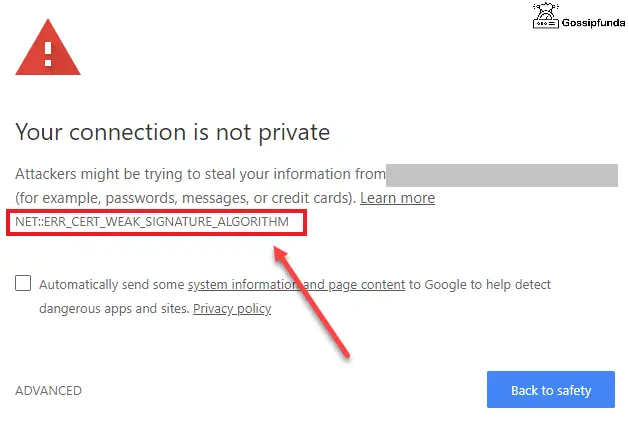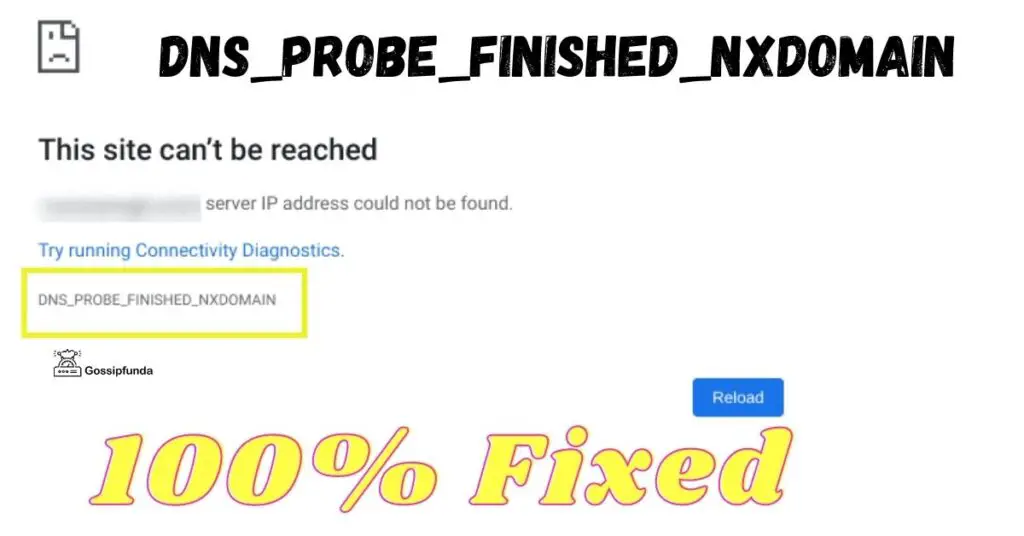While browsing the internet it is common to encounter an error message like “HTTP 500 Internal Server Error”. This error typically arises due to an unforeseen fault or situation, preventing the user’s request from being processed. It could lead to inconvenience if we are searching for some important information. In this article, we will explain the HTTP 500 internal server error. Along with some of its causes, methods to troubleshoot it, and how to prevent it from occurring again in the future.
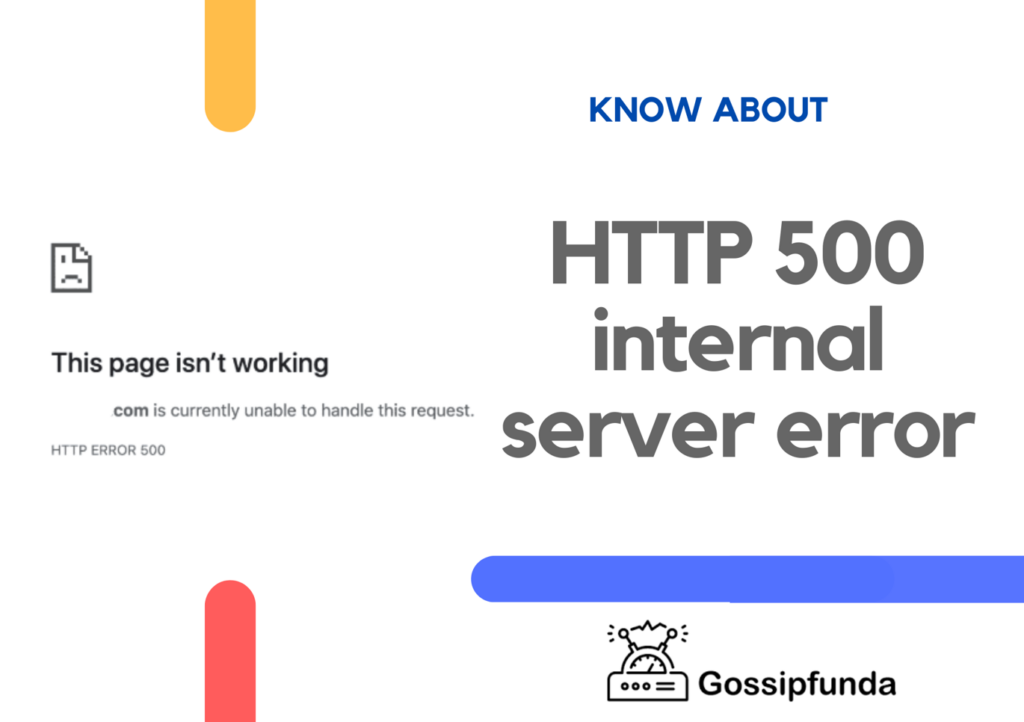
What is HTTP 500 Internal Server Error?
A frequent error message that appears when a web server is unable to process a user’s request because of an unforeseen circumstance or server issue is HTTP 500 Internal Server Error. This issue can happen on any web server and is often not specific to any one website or application. The HTTP 500 error signifies a server problem that prevents the request from being fulfilled at that moment.
Importance of understanding the error
Both users and website administrators should be aware of the HTTP 500 Internal Server Error. Understanding the issue can enable users to recognize when there is a problem with the website or server. It helps to take necessary action, such as getting in touch with the website owner or resubmitting the request later. Understanding the error is essential for website administrators to quickly identify and fix server problems, which can assist to avoid downtime.
Causes of HTTP 500 Internal Server Error
There are a number of causes for an HTTP 500 error to appear. Among the most frequent causes, we explained some here:
1. Incorrect server configuration
This could be the most frequent cause of the HTTP 500 Internal Server Error. This may happen if the server is improperly set up or if there is a conflict between various server settings. For instance, the server might be set up to utilize an incompatible version of PHP or it might not have enough memory or CPU to process the request. The server may occasionally be set up to employ a security plugin or module that is incompatible with the website or application, which results in the HTTP 500 error being returned. Furthermore, wrong directory configurations or file permissions can result in the HTTP 500 error by prohibiting the server from accessing crucial files or directories.
2. Script errors
Script errors happen when there is an issue with the script written at server-side that the server is attempting to execute. These mistakes can be caused by a number of things, such as logical mistakes in the script, runtime mistakes, and syntax mistakes. The HTTP 500 error is frequently caused by script mistakes. Some of them like attempting to access databases or files that don’t exist, carrying out actions that are prohibited, or utilizing out-of-date or incompatible third-party libraries or modules. Website administrators can routinely test and debug scripts to avoid script problems, make sure that all necessary libraries and modules are current and compatible, and keep an eye on server resources to make sure they can handle the workload generated by the scripts.
3. Database errors
This happens when the database that the website or application is attempting to access has an issue. The HTTP 500 error is generally triggered by database issues. Such as connecting to a database that doesn’t exist or it’s not accessible, going over the allotted number of database connections, or running into a database query that fails.
Database configuration issues, such as using the incorrect login or password for the database or using an outdated version of the database management system, can also result in failures. Moreover, hardware failure or bugs in the database software on the database server may be the source of database failures.
4. Resource limitations
The HTTP 500 Error can also be caused by resource restrictions also. When the server didn’t have enough resources like memory or disc capacity to handle the request, it can lead to errors like HTTP 500 error or some other. These kind of resource restrictions may lead to server overload, which causes slow response times or server breakdowns.
If a website receives an unexpected spike in traffic, which could overload the server and result in an HTTP 500 error. Similarly to this, executing numerous resource-intensive activities simultaneously on a website or application might result in the server running out of resources and returning the HTTP 500 error. Website administrators can keep an eye on server resources, use load-balancing strategies,. Optimize the website and application code to cut down on resource usage to minimize resource limitation problems.
5. Third-party plugins or modules
The third-party plugins or modules can also be one of the causes of HTTP 500 Internal Server Error. As the third-party plugins or modules, we are using has to be trustworthy and legitimatic as well. These third-party plugins are typically used to increase a website’s or application’s capabilities. But they can also introduce faults that could result in the server throwing the HTTP 500 error.
How to fix HTTP 500 internal Server error
There are numerous methods you can take to resolve the problem if you experience an HTTP 500 error when browsing the internet. Some of them are explained below:
1. Reload the page
Reloading the page is the first step in debugging an HTTP 500 Internal Server Error. Sometimes a temporary problem, such as a server bug or connection timeout, will result in this error. Reloading the page can usually fix the problem and allow you to access the website or application again.
Simply use the F5 key on your keyboard or click the refresh button on your computer browser to reload the page. After refreshing the website, if the error still exists, there might be a more significant issue.
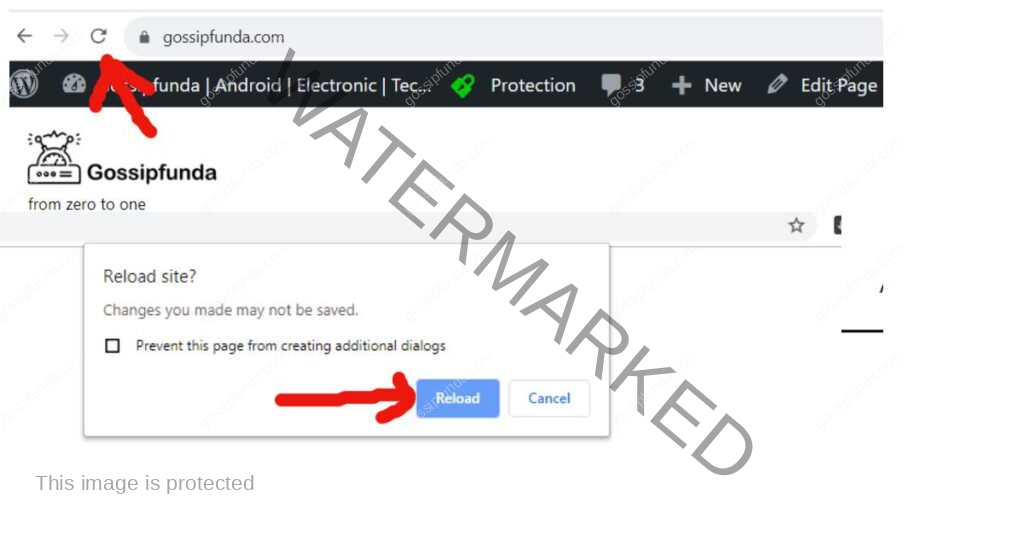
2. Check the URL
This error can sometimes be caused by an incorrect or invalid URL. For example, if a website or application is relocated or its URL is altered then HTTP 500 error may appear. Verify the URL to make sure it is spelled correctly and that it connects to the correct location. Try entering the URL directly if you are accessing the website or application using a bookmark to see if that fixes the problem.
It’s also worthwhile to see if the website or application is undergoing any planned maintenance. The HTTP 500 error may be brought on by certain websites or applications that are momentarily unavailable due to updates or maintenance. For any notifications of planned downtime, check the news section or social media pages of the website or application.
3. Check other websites
Simply access a few different websites to see if they load without any problems to check other websites. If you repeatedly get the HTTP 500 error, there might be a problem with your internet connection or web browser. Try restarting your modem or router, and clearing the cache in your browser to check if it helps to resolve the issue.
If you only ever see the HTTP 500 error on one website or application, there most certainly is a problem with that particular website. In this situation it is better to proceed additional troubleshooting techniques. Such as getting in touch with the website’s administrator or reviewing the server logs to determine the error’s primary cause.
4. Clear your browser cache
Another action you can do when troubleshooting an HTTP 500 Internal Server Error is to clear the cache in your browser. When accessing to visit a website or application, temporary files kept in your browser’s cache could occasionally give cause conflicts or issues.
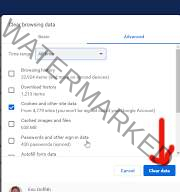
Go to your browser’s settings and look the option to clear your browsing history if you want to remove the cache on your browser. Depending on your browser, this option may have a different name. But it usually contains the ability to delete your cookies, cache, and browsing history. Check to verify whether the HTTP 500 problem has been fixed after clearing the cache in your browser by attempting to access the website or application once more. Continue with additional troubleshooting methods if the fault doesn’t go away.
5. Contact the website administrator
The next step is to get in touch with the website administrator for help. If you have tried all the previous troubleshooting techniques but are still experiencing an HTTP 500 Internal Server Error. The website administrator will have access to server logs and other resources. That can help in pinpointing the error’s primary cause and offering a fix.
Preventing HTTP 500 Internal Server Error
Although there are numerous causes for HTTP 500 Internal Server Errors. There are some preventative measures that can help reduce your chances of running into this error. Here are some pointers:
1. Maintain server software updates
One has to ensure that the most recent security patches and updates are installed on your web servers software such as Apache or Nginx. If you are a developer you have to keep the software up to date while testing and deployment as well. This might help to prevent server configuration issues or security flaws that might result in HTTP 500 errors. So it is recommended to keep software updated. If the error is found in mobile devices try to update the software on device as well.
2. Keep an eye on server resources
Be sure to keep an eye on server resources like CPU, Random – access memory, and hard drive space on a frequent basis. The performance of the website may suffer if the server runs out of resources, or HTTP 500 errors may occur. Use monitoring technologies to find out how resources are being used and to spot possible problems before they become a big issues.
3. Test website changes before deploying
When some thing is developed or even small changes are introduced, developer has to check and test it before deploying changes to the actual live site at the staging environment only. This can help to identify any problems or conflicts that might result in HTTP 500 errors.
4. Cautious while using third-party plugins and modules
Use precautions when adding plugins or modules from third parties to your website, especially if they need access to your server or database. Use only trusted plugins from reliable sources, and pay close attention to your server logs to spot any potential problems.
5. Backup your website regularly
Make sure to often back up your website or application so that you can immediately restore it to a previous working version if an HTTP 500 error or other problem arises. Backing up all the application, as developers it helps you to restore the previous version. If the new version is vulnerable or even non accessible by the user. By doing so one can save the reputation of the application.
Conclusion
In conclusion, HTTP 500 Internal Server Error is a common error message. That indicates that the web server encountered an unexpected error or condition that prevented it from fulfilling the request made by the user. In this article we have discussed causes, troubleshooting methods, and a few preventive measures to follow up. If you have any points to add or any questions feel free to comment on them.
FAQs
The HTTP 500 Internal Server Error may have an impact on SEO. Since it may prevent search engine crawlers from accessing and indexing the impacted pages. The website’s search engine rankings could suffer if the problem is not fixed very away.
Although HTTP 500 Internal Server Error is not always a security threat in and of itself, it may be caused by security vulnerabilities or server setup problems that could result in security breaches. To stop security concerns, it’s important to often check server logs and keep server software updated.
The user experience may be negatively impacted by HTTP 500 Internal Server Errors. As they show that there is a problem with the server hosting the website or application and the user may not be able to access the requested content. To guarantee a pleasant user experience, all HTTP 500 failures must be quickly fixed.
Ragini P. Anvekar is a distinguished professional with a Bachelor’s degree in Computer Science Engineering. With a profound expertise in her field, Ragini has made significant strides in the tech industry. Her passion for technology and its applications is evident in her technical writing. Through her articles, she simplifies complex technical concepts, making them accessible to a broader audience. Her work reflects a deep understanding of current trends and technologies in computer science. Ragini is recognized for her ability to convey intricate details with clarity and precision, making her a valuable asset in the tech community. Her contributions extend beyond writing, as she actively participates in various tech forums, sharing her knowledge and insights.

